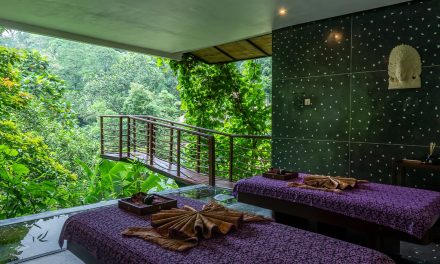If you’re a nature lover yearning for a slice of paradise, Ubud in Bali should top your list of destinations. With its breathtaking rice terraces, lush jungles, and vibrant wildlife, this cultural heart of Bali offers a unique blend of serene nature experiences and rich cultural encounters. But, when is the best season to visit Ubud for nature lovers? Join me as I take you through the seasons, share personal anecdotes, and sprinkle in some practical advice.
The Enchantment of Ubud
Before we dive into the seasons, let’s set the scene. Imagine waking up to the sound of chirping birds and the gentle rustle of palm leaves in the breeze. You step outside your cozy accommodation, and there it is—a breathtaking view of endless emerald rice paddies, lush with morning dew. It’s a dream, right? That’s Ubud for you!
Wet Season: December to March
The wet season in Ubud generally runs from December to March, with January often being the rainiest month. As nature lovers, it’s important to view this season through a different lens.
While the rain may deter some, I found this season to be breathtakingly beautiful. Picture this: walking through the Tegalalang Rice Terraces after a rain shower. The vibrant greens shimmer, and the air carries the sweet scent of wet earth and blooming flowers. There were hardly any tourists around, giving me the space to connect intimately with nature. I actually had a moment where I stood in awe, inhaling the fresh smell of rain-soaked soil, feeling alive and grateful.
However, it’s essential to prepare for sudden downpours! Bring a good raincoat, and don’t forget waterproof footwear—trust me, squelching through mud isn’t as fun as it sounds!
Transition to Dry Season: April to June
As we transition into the dry season, the weather improves, and Ubud begins to bloom in vibrant colors. April and May are perfect months for nature enthusiasts like us who prefer milder temperatures, usually ranging from 24°C to 32°C (75°F to 90°F).
This was the sweet spot for me when I visited Ubud. The sun was shining, and I set out for a hike in the Campuhan Ridge Walk early in the morning. The views were nothing short of spectacular—overlooking hills adorned with wildflowers and verdant forests. Imagine sipping fresh coconut water from a tiny roadside stall, the air filled with fragrant flowers that seem to dance in the gentle breeze.
Peak Dry Season: July to September
However, the peak dry season from July to September draws the most visitors. While Ubud is alive with activity, the lush landscapes may not be as pristine as earlier. Tourists flock to popular spots such as the Sacred Monkey Forest Sanctuary, and it can get a bit crowded.
That said, I still found pockets of tranquility. Early mornings at the Ubud Botanic Garden felt like a private retreat. The flowers were in full bloom, butterflies fluttered gracefully, and the serenity of the garden made it easy to forget the crowds elsewhere.
Off-Peak Tranquility: October to November
If you seek to experience nature unhindered by crowds, visiting in October or early November can be a treasure. The weather remains pleasant, and the landscapes are usually in good shape post-dry season.
On my trip during this time, I ventured to the Tegenungan Waterfall. The spray of water glistening in the sunlight was captivating. The paths leading there were less traveled, allowing for moments of solitude with nature. While I was there, I met a local artist who painted scenes of Bali and exchanged stories about the unique flora and fauna—talk about a enriching experience!
Practical Tips for Nature Lovers
1. Stay Hydrated: Always carry a reusable water bottle; you’ll need it, regardless of when you visit!
2. Dress Comfortably: Wear light, breathable clothing, and don’t forget your sunscreen, especially in the dry season!
3. Respect Nature: Whether you’re hiking or exploring, leave no trace. Ubud’s natural beauty is its treasure, and we must protect it.
4. Explore Off-The-Beaten-Path: Engage with locals and ask them about hidden gems. The lesser-known trails can lead to breathtaking views.
5. Plan for Rain: If visiting during the wet season, have flexible plans. Nature is at its raw and beautiful best when it rains.
Conclusion
So, what’s the best season to visit Ubud for nature lovers? Ultimately, it depends on what kind of experiences you’re seeking. For a lush, vibrant landscape without too many tourists, the wet season can be magical. If you prefer more stable weather and a buzz of activity, the dry season might be ideal. Regardless, Ubud’s charm is undeniable, and nature lovers will find a little piece of paradise any time of the year.Ready to pack your bags and immerse yourself in the beauty of Ubud? I know I am! Happy travels!






